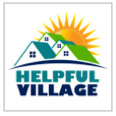The Village Movement
What is a village?
Villages are community-based non-profit, grassroots organizations formed by local neighbors who want to change the pradigm of aging. Local villages connect members who are older adults to a wide array of practical support services that enable older adults to enjoy independence in their own homes for as long as possible.
Originating in Boston, MA in 1999, the village movement has grown considerably and now villages serve older adults in over 350 communities throughout the United States. Each village is unique, and reflects the specific needs of its members and the local community.
Village Characteristics:
Autonomous and self-governing
Run by volunteers, sometimes with paid staff
Positively impact isolation and increase interdependence
Work collaboratively with local entites to help with the challenges of aging
Ensures that gaps not normally covered by existing organizations are "closed"
Offers services by volunteers who have passed background checks
Why are villages needed now?
A 2010 AARP survey indicated that 90% of all older adults want to remain in their homes and communities as they age. The village model helps individuals age in a place of their choosing, providing practical support that is often unavailable from other agencies. In the United States, roughly one in three people over the age of 65 live alone, and over 50% of those 85 and older live alone. The village model works! Village members consistently report increases in feelings of well-being and quality of life as a result of their connection with a local village.


